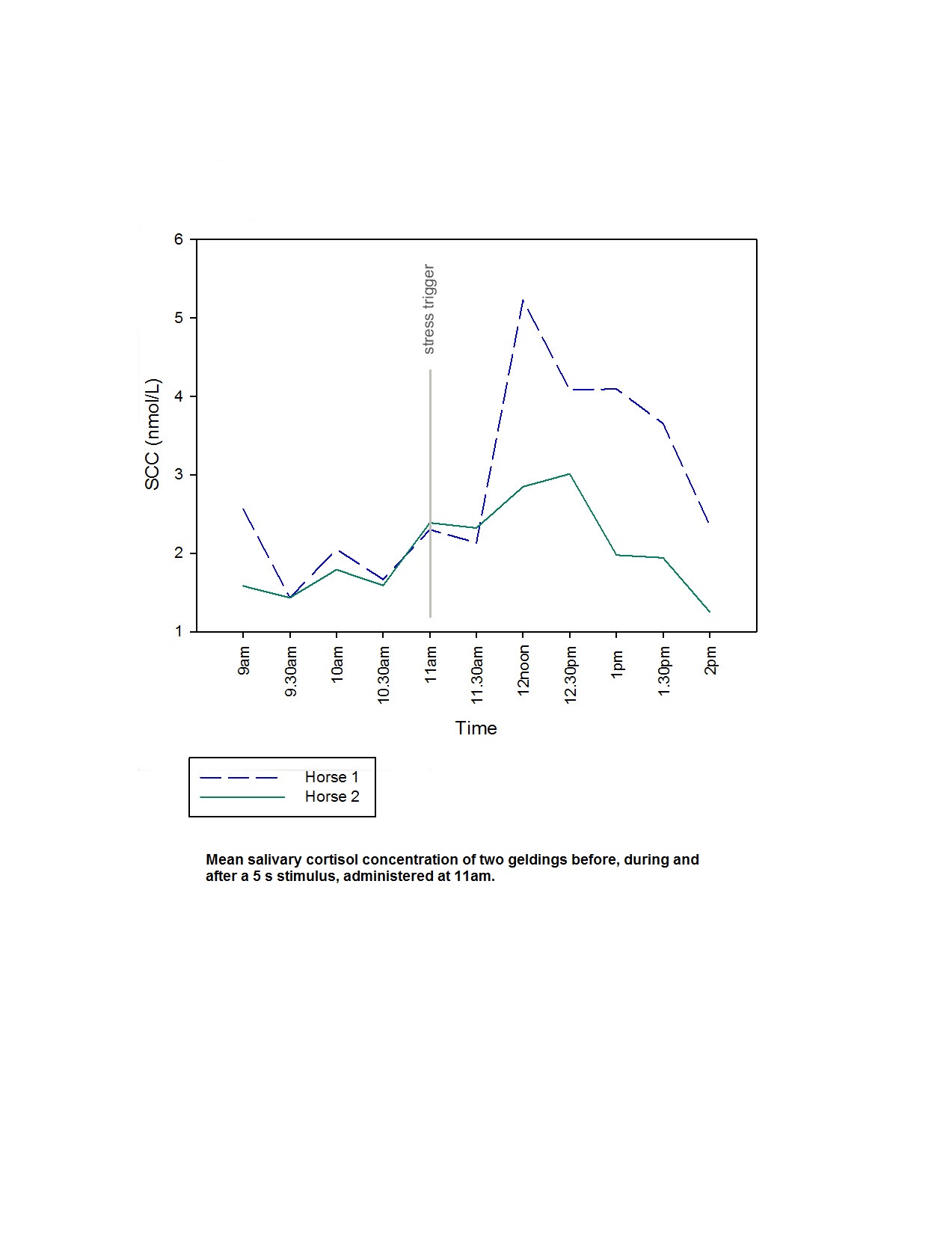Developing a Methodology for Measuring Stress Responses in Pastured Horses Using Salivary Cortisol Concentration (#848)
There has been recent discussion over the methods and limitations of salivary cortisol concentrations (SCC) for assessing stress responses in horses (Visser 2014). There are insufficient, or conflicting, data regarding circadian levels, variable basal levels between horses in a herd, and delayed secretion of cortisol into saliva. The majority of published studies involved stabled horses, which present as standardized subjects. However, positive stimuli within the normal stable routine, such as feeding and exercise sessions, that affect cortisol concentration have frequently been overlooked in experimental designs.
We developed a study to determine the SCC response to stress trigger events in pastured horses, with a methodology taking these queries into account. The subjects were two unrelated, paddock-kept, unstarted geldings aged 4 and 7 years, which had shared a secure herd environment for 12 months. The horses had unrestricted movement and access to feed throughout the study period. SCC responses to a sudden 5-sec visual and auditory stimulus were assessed in both horses. Each received a single stress stimulus once per week, carried out approximately 2 h after the early morning SCC peak determined previously. Saliva was collected at 30-min intervals for 2 h post-stimulus. This regime was repeated once a week for 4 weeks.
Both horses experienced a sharp increase in SCC following the trigger event, with peak concentrations at 60 to 90 min post-stimulus. Pre-stimulus SCCs ranged from 0.71 to 3.61 nmol/L (mean 2.00 ± 0.8 nmol/L). Post-stimulus, peak SCCs ranged from 2.59 to 5.44 nmol/L (mean 4.19 ± 0.9 nmol/L).
In conclusion, equine responses to sudden stress triggers can be quantified with SCC assay, but knowledge of the subjects’ underlying basal levels is important in order to properly interpret the results. Timing of sample collection should be adjusted according to circadian peak periods, and to accommodate the delayed peak in SCC.

- Visser, K., Camie Heleski2 (2014). Strengths and Limitations of Measuring HR, HRV & Cortisol. 10th International Equitation Science Conference, Denmark, Aarhus University, Department of Animal Science.
 BEHAVIOUR 2015*
BEHAVIOUR 2015*